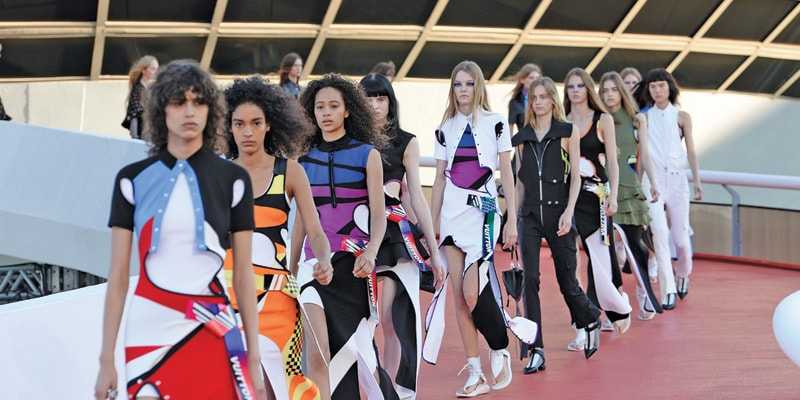Despite the worst recession in 30 years, growing political turmoil and Zika fears in the country, Brazil continues to see luxury brands still investing huge amounts of money in the retail segment. While the decreasing GDP points to a grim outlook of wary customers and tight expenditure of luxury retail in the country, but on the other hand Louis Vuitton, showcasing its cruise 2017 collection, provides a completely different outlook for the country which is of growth, importance and expansion for luxury retailers.

According to the Brazilian Institute of Geography and Statistics (IBGE), the country’s consumer price index rose 10.67 per cent in 2015, the highest rate of inflation in 13 years. But in the same year, the country’s GDP shrunk 3.8 per cent to US $ 1.6 trillion, the largest decline since 1990. In March 2016, Brazil’s National Confederation of Shopkeepers reported that the number of delinquent companies, defined as businesses that have defaulted on their debts, had increased by 11.08 per cent in the previous year.
Contrary to the indications that the above statistics provide, luxury brand, Louis Vuitton showcased its 2017 Cruise collection in the country, which lays emphasis on the importance of the country to the brand. “We’re investing in Brazil because we know Brazil is a great country. We’re not surfers, we’re investors. We invest in fundamentals. We buy for the long term,” confirmed Michael Burke, Louis Vuitton’s Chief Executive in an official statement. Apart from Louis Vuitton, Hermès, which sponsored the country’s show jumping team during the Olympics, has also opened its second store there, it’s first in Rio. The reason primarily is because Brazil is an important market for luxury brands as it remains home to a large proportion of wealthy population. According to a 2015 report by Capgemini, the country accounts for more than 50 per cent of the total holdings of South America’s high net worth individuals, around US $ 3.97 trillion down just 1.4 per cent from 2015.

Nevertheless, high tariffs of around 50 or 60 per cent make luxury goods more expensive in Brazil, which has proved to be a major roadblock in sales for luxury brands. But this is increasingly changing as brands have been adjusting their prices in the country to bring them in line with the global pricing structure. This has led to a spur in people who did their luxury shopping abroad, increasingly spending the money at home. According to Brazil’s Central Bank report, Brazilians spent US $ 17.4 billion overseas in 2015, down 32.1 per cent from the year before and the lowest figure since 2010.
These consumers prefer buying close to home not only because they can afford to but also because they would rather engage with sales people, who can speak their language and also understand local customs. Apart from this, the country’s luxury consumers can take advantage of paying in instalments as most of the population, regardless of income, pays for everything, from groceries to shoes, in instalments, known as ‘parcelas’. That’s why western brands that allow parcelas have fared better than others, but they must also reckon with the downside associated with such plans.
Apart from this, brands such as Kate Spade New York and a few other American brands have had difficulty gaining traction in the country because of a cultural disconnect. According to experts, Italian and French brands are desired by the country’s luxury consumers. Also, these consumers do not buy names that are not well-known that’s why big names such as Chanel, Prada and Hermès can support years of challenges such as a weak economy but names that aren’t huge, are not able to endure.
Apparently the country’s political atmosphere is becoming a deterrent for the luxury retailers as the weak financial picture has helped to drive impeachment proceedings against President Dilma Rousseff, who was replaced by her Vice President, Michel Temer, after being suspended on May 12. While Rousseff is accused of violating the federal budget’s books in order to hide the growing deficit, Temer himself has been recently convicted in court of violating campaign finance laws. Add to this the party and its allies have also been involved in various bribery scandals centred on state-run oil company Petrobras. Widespread rampant corruption and the unemployment rate jumping nearly 2 per cent in one year, clocking in at 8.5 per cent in 2015 up from 6.8 per cent in 2014 is also painting an unfavourable picture of the country.
Though Brazil’s economy – the largest in Latin America – has been witnessing sluggishness from past two years, perhaps it’s the worst in more than a century. But industry experts are of the view that it will take a rebound later this year! Still the higher unemployment rate and the unfavourable political scenario will continue to play deterrent in the retail sales of the country. So while the luxury brand’s hopes for Brazil still remain high, it remains to be seen how the country will face-off against various challenges that surround it.

Post a Comment